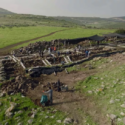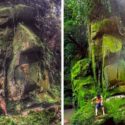Ancient Egyptians Worshipped God Sobek With Reptile Head & Why Are There Crocodile Mummies?
Animal cults were widespread in ancient Egypt. The heads of various animals were used to portray the gods. Sobek or Sebek, an ancient Egyptian divinity, was one of them. On a human body, he was represented with the head of a crocodile.
Sobek is one of the Egyptian pantheon’s oldest and most important gods. He was revered as a divinity, personifying time and eternity, as well as the ruler of the Nile and the king of its floods, providing prosperity and plenty.
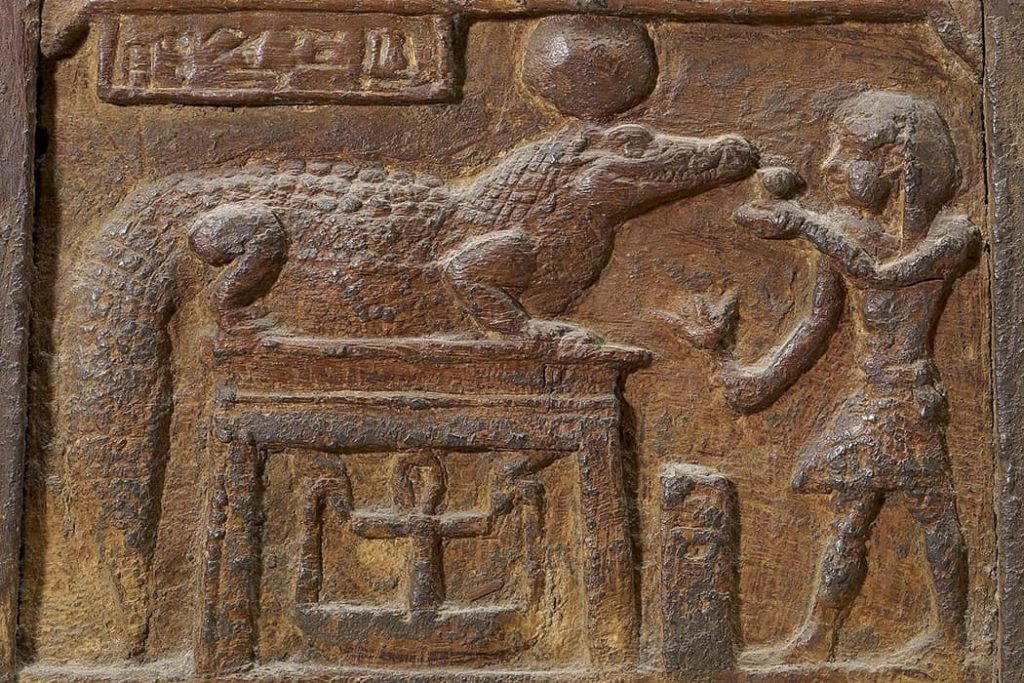
Sobek was a crocodile god who, according to legend, was regarded in Ancient Egypt as a creature capable of resolving practically any problem. His initial appearance occurred during the reign of King Narmer, the first unified king of Egypt and the founder of the first dynasty. He debuted as Neith’s son, with the moniker “The Rager.”
Crocodiles face a specially shaped shrine on the sealing, which later became the symbol for the city of Sheet (later Crocodilopolis) near Al-Fayyum. In Ancient Egypt, the crocodile god Sheet had his cultural center. Archaeologists discovered over 2,000 mummified crocodiles buried with special honors there. Sobek was one of the most important gods in Egyptian religion during the Old Kingdom, and he was frequently mentioned in the funeral Pyramid Texts. Despite the infrequent literary references to Sobek, his fame at the time was centered on his Sheet cult center.
Crocodiles were preserved in good condition in Ancient Egypt. Animals wore gold jewelry as a show of tremendous respect and worship. The priests of the temples of Sebek kept a close eye on the crocodiles’ diet. Crocodile bodies were mummified after death and then buried with great honors, as proven by multiple excavations. Every year, a considerable number of tourists visit the caves where the embalmed crocodiles are kept.
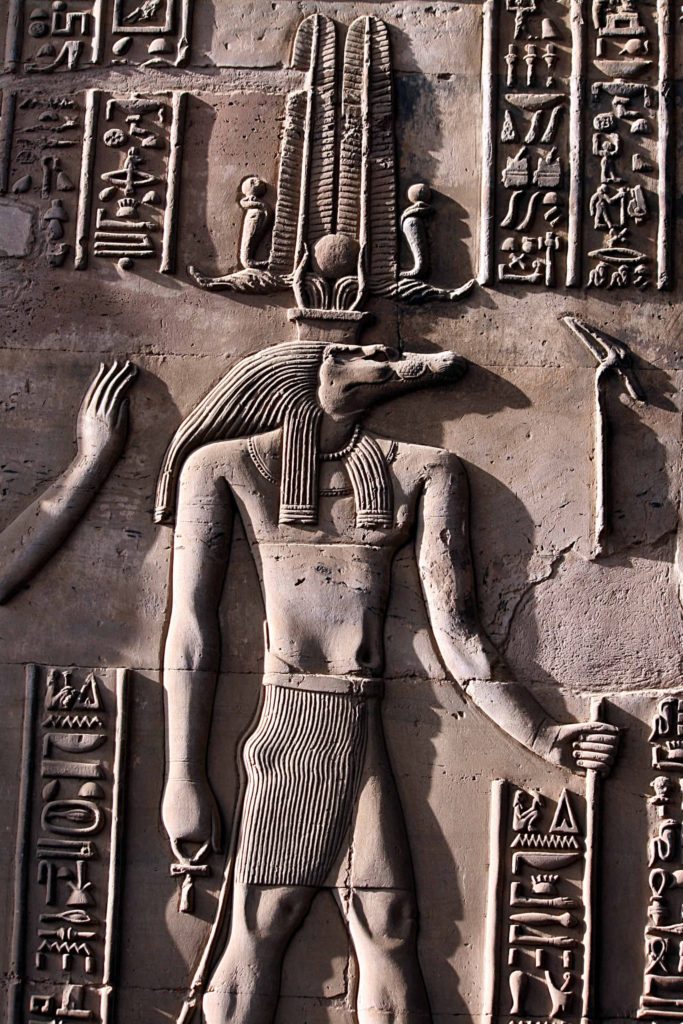
During the Middle Kingdom, crocodile worship developed. Many pharaohs at the time had to add the name Sobek in their titles. This was thought to significantly boost their strength and power. A crocodile is frequently mentioned in Egyptian mythology, particularly in the renowned Osiris narrative. Sebek was worshipped as a god of water, as well as harvest and fertility. New crocodiles were indeed born during the Nile flood. The depiction of various portions of a crocodile’s body can even be found in hieroglyphic symbols.
According to legend, Sobek’s father was Seth, the god of thunder and chaos, but he also had a strong relationship with Horus. Horus disguised himself as a crocodile to locate bits of Osiris’ body that had been lost in the Nile. Sobek assisted Isis in giving birth to Horus. Even though he was frequently represented wearing Amun’s headdress, he had a close relationship with Amun-Ra and Seth, Osiris’ major foe.
Long before the arrival of the principal gods Ra and Amun, the Egyptian Goddess Neith was worshipped as the goddess of the universe, fate, knowledge, water, rivers, mothers, childbirth, hunting, weaving, and war. She was occasionally seen breastfeeding a young crocodile, which some beliefs claim is the God Sobek. He was represented as a lizard with a human head and a long, squat body. His eyes were light, but his tail was dark. Like the ancient Greek Hades, it was the merciless and incorruptible Sobek who guarded the gates to the underworld, from which no dead souls could escape.
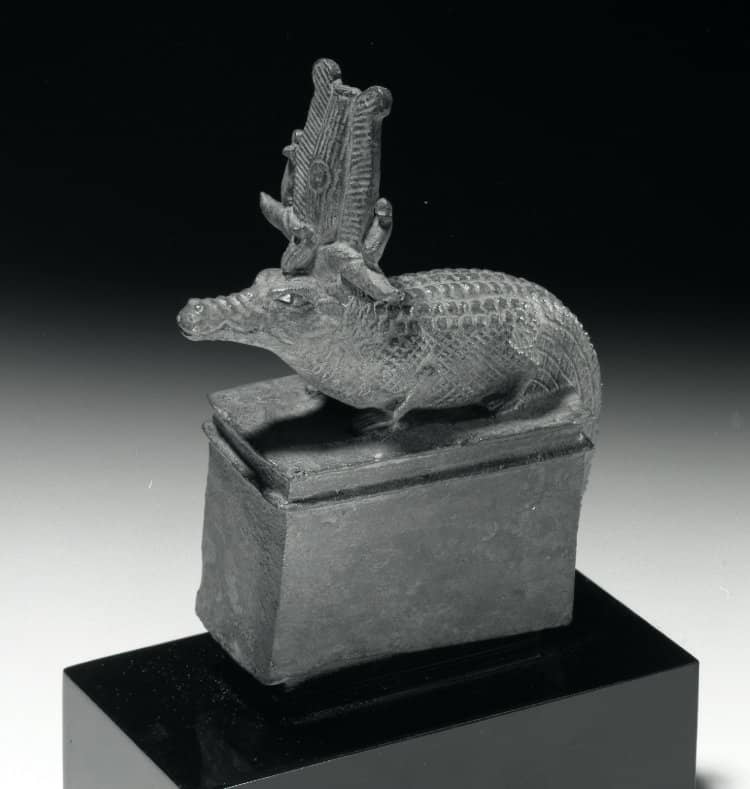
Sobek was worshipped in Egypt as the god of the Nile’s flood, and the Nile provided Egypt with more than just water; it also provided the key to life itself. The Nile’s floods aided the Egyptians in reaping vast crops while also threatening to wash away entire towns.
Sobek was included among the gods by the ancient Egyptians for a purpose. They gave the crocodile magical abilities: female crocodiles seem to know how far the Nile will overflow its banks ahead of time. They lay eggs before spilling, yet their nests are never inundated since they are constantly above the water level. As a result, the farmers regarded the crocodile as the Nile’s clairvoyant king.
Huge and sedentary Nile crocodiles were maintained at Crocodilopolis’ main temple. They wore a lot of gold and diamond jewelry around their necks and their paws. Every day, the reptiles have force-fed a variety of meats, bread, fresh fish, and even fine wine by special attendants.
The cult of the crocodile god Sebek, however, may be found in different parts of Ancient Egypt. In Ambo and Ombi, for example, it was previously known as Nut. Since 2012, there has been a demonstration of crocodile mummies at a temple devoted to Sobek.


